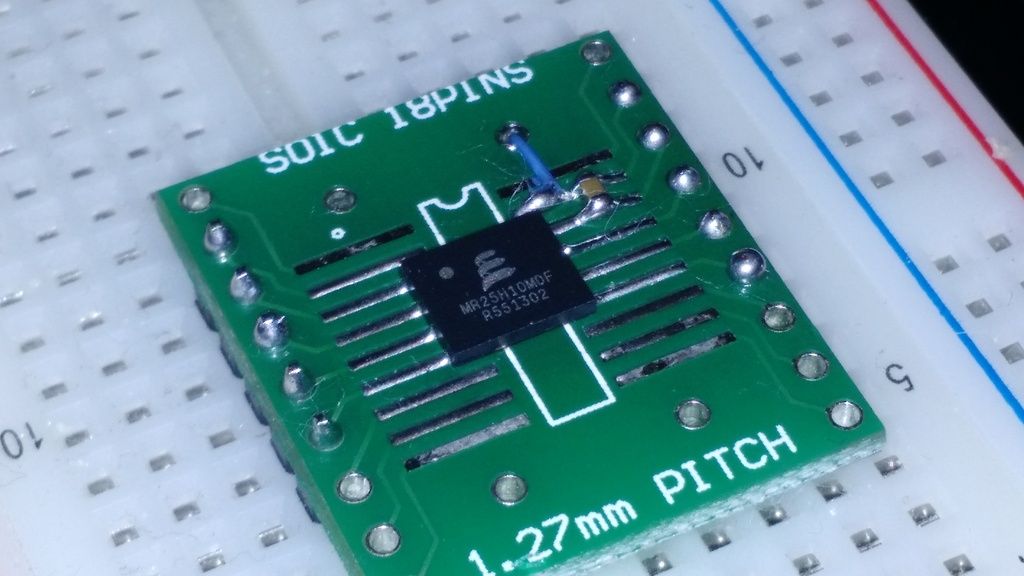// Test
// SerialRAM / MR25H10 1Mbit / Teensy 3.1 / Arduino 1.0.6 /
#include <SPI.h>
#include <SerialRAM.h>
#define RAM_CS2 20//CHIPSELECT
#define OPCODE_WREN B00000110 /*06h Write Enable Latch */
#define SPICONFIG2 SPISettings(20000000, MSBFIRST, SPI_MODE0)
void WriteEnable ()
{
SPI.beginTransaction(SPICONFIG2);
digitalWrite(RAM_CS2, LOW);
{
SPI.transfer(OPCODE_WREN);
}
digitalWrite(RAM_CS2, HIGH);
SPI.endTransaction();
}
void setup() {
Serial.begin(115200);
// initialize SPI:
SPI.begin();
ram_init();
WriteEnable ();
while (!Serial) {
; // wait for serial port to connect.
}
}
void loop()
{
unsigned char data_to_chip_A[17] = "Testing 90123456";
unsigned char data_to_chip_B[17] = "OK ";
unsigned char data_from_chip[17] = " ";
int i = 0;
// Write some data to RAM
//ram_write(B *buf, 24B addr, 0-1,048,575 len);
ram_write(data_to_chip_A,100, 17 );
// Read it back to a different buffer
ram_read(data_from_chip, 100, 17);
// Write it to the serial port
for (i = 0; i < 16; i++) {
Serial.print(char(data_from_chip[i]));
}
Serial.print("\n");
delay(1000); // wait for a second
ram_write(data_to_chip_B,50, 17 );
ram_read(data_from_chip, 50, 17);
// Write it to the serial port
for (i = 0; i < 16; i++) {
Serial.print(char(data_from_chip[i]));
}
Serial.print("\n");
delay(1000); // wait for a second
}


